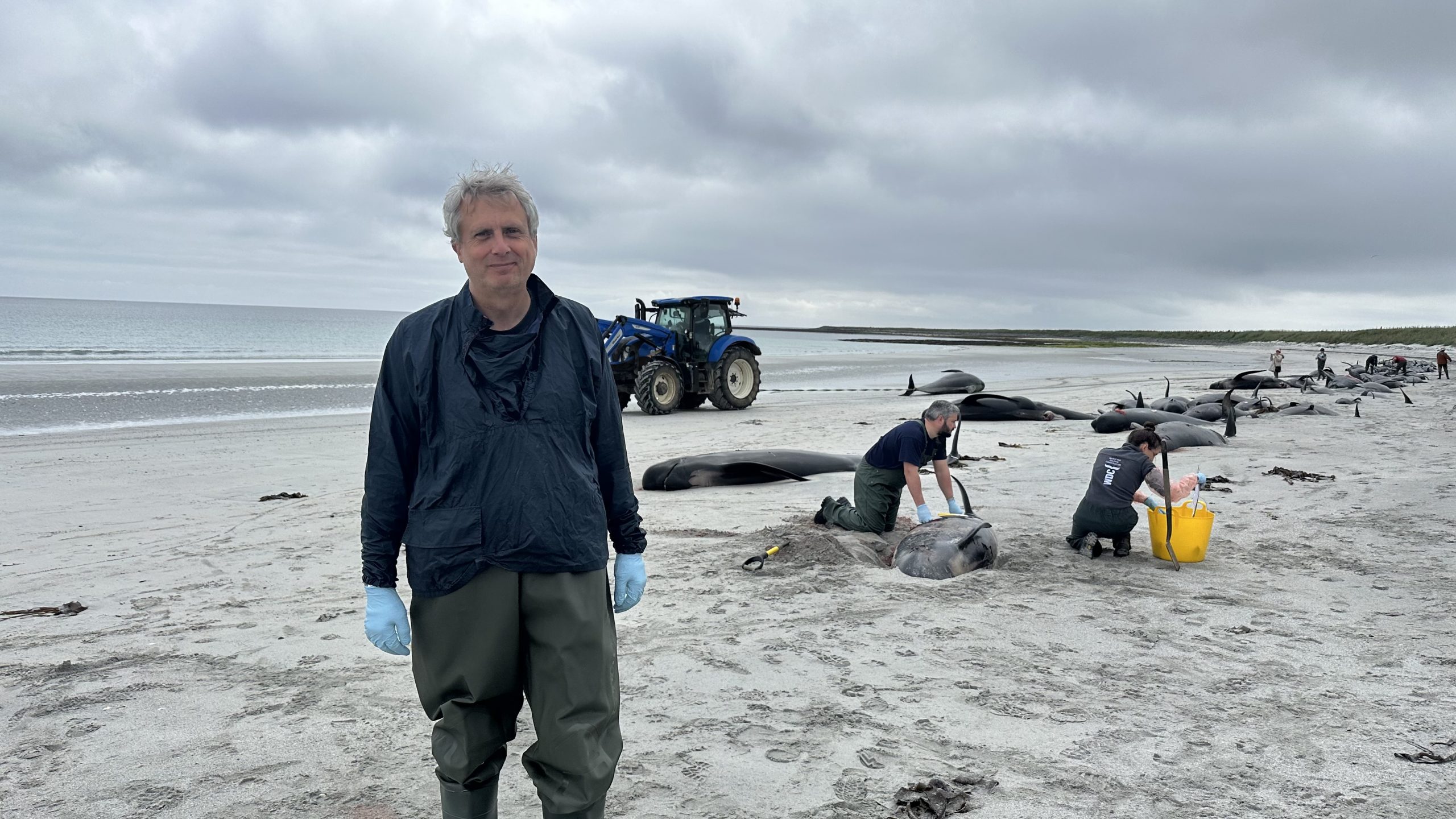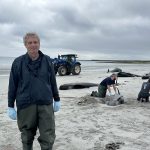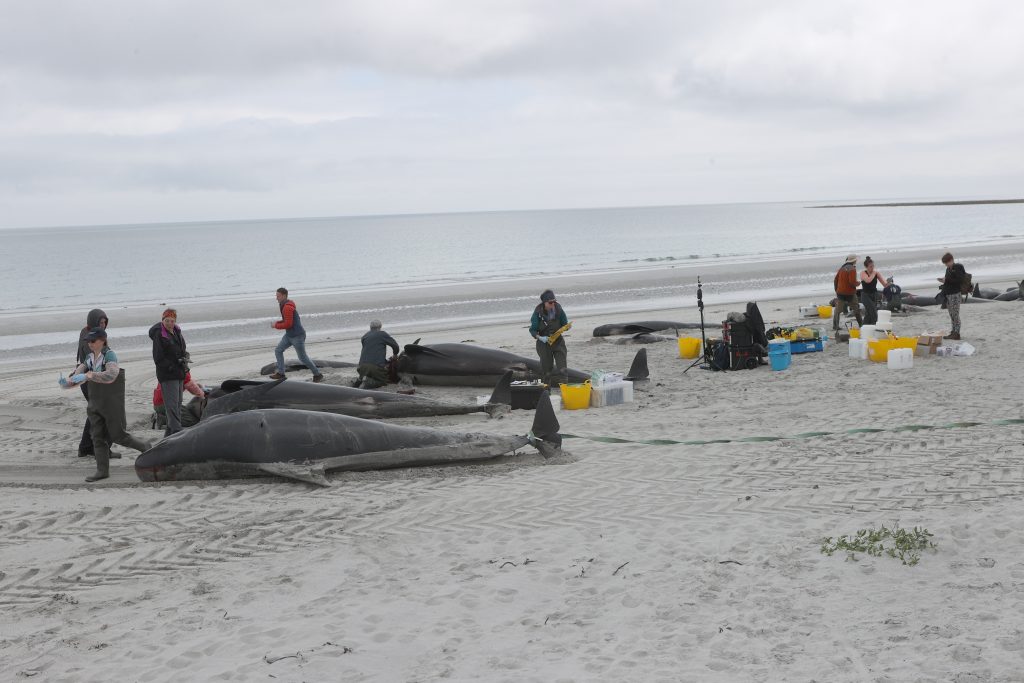

Whale stranding investigation focuses in on four females

Leading whale stranding scientists are investigating a number of possible causes behind a mass stranding of 77 whales in Sanday.
Pathologists on the scene believe this to be the largest stranding event involving pilot whales in Scotland since the 1920s.
Tissue samples of each of the whales, which fatally beached at Tresness in Sanday on Thursday, are currently being extracted. Four females likely to be the pod matriarch have been selected for dissection and further analysis.
It is hoped that this work will isolate the cause of the stranding from a number of possibilities — including disease and ill health, as well as man-made factors such as sonar.
Nick Davison, stranding co-ordinator for the Scottish Marine Animal Stranding Scheme, based at the University of Glasgow, was part of a large influx to the island on Friday morning.
“This is the biggest mass stranding I have ever been to, and I’ve been working on strandings since 1986,” he told The Orcadian, as vets, pathologists, and volunteers gathered on the beach this morning.
“It breaks your heart, really. This is an entire extended family on the beach. There will be a matriarch in there somewhere.”
Mr Davison, explained that it is not uncommon for some cetacean species, including pilot whale, to beach themselves en-masse when a member of the pod becomes unwell.
“If any one of the pod is having difficulties, even close to shore then they will corral round to protect that animal — even resulting in their own death,” he said.
Refloating these gigantic animals is a massive task — partly because they are liable to re-beach themselves if the rest of the pod remains in distress on shore. This tragic event saw 12 initial survivors of 77 have to be euthanised, despite the efforts of the British Divers Marine Life Rescue (BDMLR).
Now work is under way to full assess the carcasses, before plans for their safe disposal are put in place.
“What we’re doing is prioritising four animals in the middle of the pod,” said Mr Davison.
“They are all adult females — one of those may or may not be the matriarch. They are not too badly gone off, so we will try doing an autopsy on all four of those, which will involve taking the heads of, taking the brains out, taking the ears out.”
This work, he explained, may be able to identify whether there was a health, environmental, or man-made cause behind the stranding.
Aside from disease, illness, and old age, predator interaction can also be a factor in sending a pod fatally off-course, as can technology used by humans.
“Killer whales for example can scare them into an area,” Mr Davison said.
“There’s also mid-range sonar used by the military, or by people doing surveys for oil and gas. We can look for damage to the ears by taking the cochleas out and examining them with an electron microscope.”
It was Alan Harcus, a Sanday man now living in Kirkwall, who discovered the whales on Thursday.
“Me and my wife and son had just come out yesterday and we thought we’d go for a walk round Tresness,” he told The Orcadian.
“We saw these things in the distance and then we could see fins ticking out of the sand, and I thought — something’s not right here.”
Mr Harcus soon phoned his sister Linda Sinclair, who raised the alarm with authorities.
The stranding has sent a wave of sadness throughout Orkney, and the community in Sanday has pulled together to offer what help it can in the coming days, including accommodation for those coming into the island.
It is expected that the work of whale scientists — more of whom are expected to arrive in Orkney soon, could take up to four days. It is understood that plans for the whales’ disposal may become more clear as early as tomorrow morning.
- This is a breaking news story and may be edited as further details emerge.